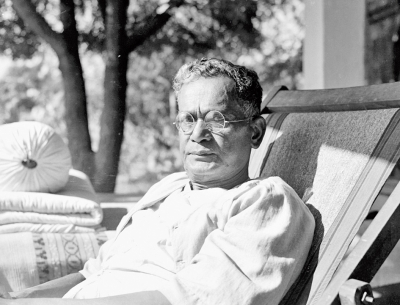
The original Constitution of India, adopted on 26 January 1950, was not a printed document. It was entirely handcrafted by the artists of Shantiniketan under the guidance of Acharya Nandalal Bose, with the calligraphy texts done by Prem Behari Narain Raizada in Delhi. This document is now preserved in a special helium-filled case in the library of the Parliament of India. In many ways, the original handcrafted Constitution represents one of the triumphs of Shantiniketan and Kala Bhavan.
At the beginning of each part of the Constitution, Nandalal Bose has depicted a phase or scene from India’s national experience and history. The artwork and illustrations (22 in all), rendered largely in the miniature style, represent vignettes from the different periods of the history of the Indian subcontinent, ranging from Mohenjodaro in the Indus Valley, the Vedic period, the Gupta and Maurya empires and the Mughal era to the national freedom movement. By doing so, Nandalal Bose has taken us through a veritable pictorial journey across 4000 years of rich history, tradition and culture of the Indian subcontinent.
The Vedic period is represented by a scene of gurukula (forest hermitage school) and the epic period by images from the Ramayana and Mahabharata. Then there are depictions of the lives of the Buddha and Mahavira, followed by scenes from the courts of Ashoka and Vikramaditya. There is a beautiful line drawing of the Nataraja from the Chola bronze tradition.
Picture Credit : Google

